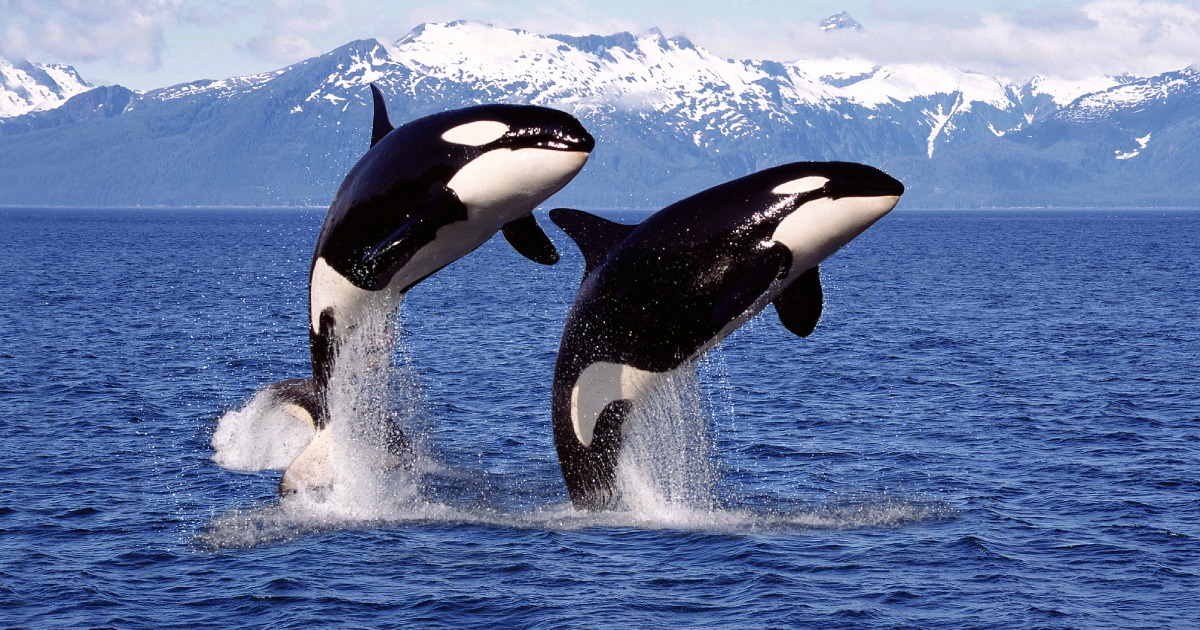Scientists found out what price killer whales pay for helping their sons all their lives

Female killer whales continue to help their sons even when they grow up and, it would seem, no longer need the care of their elders. In this way, killer whales, like many other animals, increase the chances of survival of their children. And recently, a group of scientists from the USA and Great Britain found out that such care seriously affects the lives of not only orca children, but also their mothers. Female killer whales, or killer whales as they are called, reach sexual maturity at about 10 years of age and can reproduce up to 40 years of age. After that, menopause occurs in them, which is typical for very few species of animals. Therefore, females can live for several dozen more years without the possibility of giving birth to children. Males begin to reach sexual maturity at about 15 years of age, and in general live an average of about 30 years. Pregnancy in killer whales lasts 15-18 months. They usually give birth to one cub every 5 years on average. During the year, the female feeds him with milk, and then the weaning period begins, which lasts until the age of two. Killer whales live in different parts of the world ocean. But they are divided into separate populations, that is, separate groups. They differ from each other genetically, in appearance, behavior, “dialects”, etc. The journal Current Biology published the results of a study of one such population living in the Pacific Ocean near the states of British Columbia, Washington and Oregon. It is small in number – about 70 individuals. Using her as an example, the authors of the study wanted to test their hypothesis: the more live offspring a female killer whale has, the less likely she is to have subsequent children. In addition, the researchers assumed that such dependence would be more pronounced in the case when the offspring are sons, not daughters. Photo: slowmotiongli/GettyImages To find out if this is really the case, researchers for about 40 years conducted an annual “orca census” in the population of interest. Thanks to this, they knew not only how many there were, but who exactly gave birth to whom, and who died at what age. Based on the collected data, scientists built several mathematical models. These models showed that female killer whales who gave birth to sons have a significantly reduced chance of having offspring later in life. In other words, if the orca already has a son, it is more difficult for her to have other children, although it is possible. Therefore, if she has another son, the chances of having further children decrease even more. At the same time, orcas’ daughters do not have such an influence on the mother’s fate. A similar effect, when animals worry about their offspring and pay for it with their reproductive efficiency, scientists call “maternal investment”. It happens in other animals and scientists know about it. But usually such “concern at the expense of further reproduction” does not last throughout life, although it can be long. Killer whales, or rather one of their populations, became the first known animals for which this effect lasts a lifetime. It is not known exactly how this mechanism works. The study does not answer this question, because its authors did not set themselves such a goal. But at least a partial explanation can look like this. Male killer whales live with their mothers all their lives. Mothers share their prey – fish – with their sons. Relatively speaking, they are fed from a spoon. It benefits the sons but harms the mothers. At least when it comes to their ability to reproduce. After all, in order to successfully bear healthy children, the female needs enough food. Instead, she “gives her son almost the last thing.” The most important question remains: why do killer whales need such a mechanism, or what is its expediency? As explained to “Ukrainian Pravda” by an evolutionary biologist, head of the Department of Evolutionary Morphology of the Institute of Zoology named after I.I. According to Schmalhausen of the National Academy of Sciences of Ukraine, Ihor Dzeverin, the social group of killer whales includes an older female, her daughters of various ages, and female grandchildren and great-grandchildren through the female line. As for males, they are raised and live in these groups, but reproduce in others. In their group, males can reproduce only as an exception. A similar scheme exists in various animals – because it is an obvious way to prevent inbreeding, that is, crossing between close relatives. But in some species, as in the case of killer whales, females remain to give birth to offspring in their group. And in some primates, on the contrary, females are “given” to other groups, while males stay where they were born. “In a group of killer whales, the female competes with her own mother, her own daughters, female grandchildren on the female line, and so on for resources, for example, food and participation in reproduction, – explains Ihor Dzeverin. – And with the sons and grandchildren of both sexes for the male the line does not compete, because the sons reproduce somewhere else, and the next generations will live there. Accordingly, it is more profitable for the male to invest resources in sons, and not in daughters, who create competition for him. At least, according to the authors of this study.” At the same time, Ihor Dzeverin notes that the authors’ explanation, although it may be correct, lacks arguments. First of all – calculations based on game theory. It is they who, in such studies, help to find out whether such a strategy of behavior is really effective. In the “orca problem”, such an analysis would also be very useful for a better understanding of the situation. In addition to the fact that the results of the study are interesting from a theoretical point of view, they can have purely practical significance. After all, the researched killer whale population is small and needs protection. Knowledge about the peculiarities of the reproduction of these animals and their demography allows, if not to help in this, at least to better understand and predict the processes that take place. The authors of the study suggest that a similar phenomenon of “maternal care at the expense of further reproduction” may be characteristic of other populations of killer whales and other species of cetaceans. Such as grindy, or pseudo killer whales. Further studies of other cetaceans may confirm or deny this assumption. But in addition, they will help to better understand the nature of such a phenomenon as “maternal care at the expense of further reproduction.” Dmytro Simonov, especially for UP. Life Read also: Sexual strategies that will amaze you: how animals make love
Original Source Link











